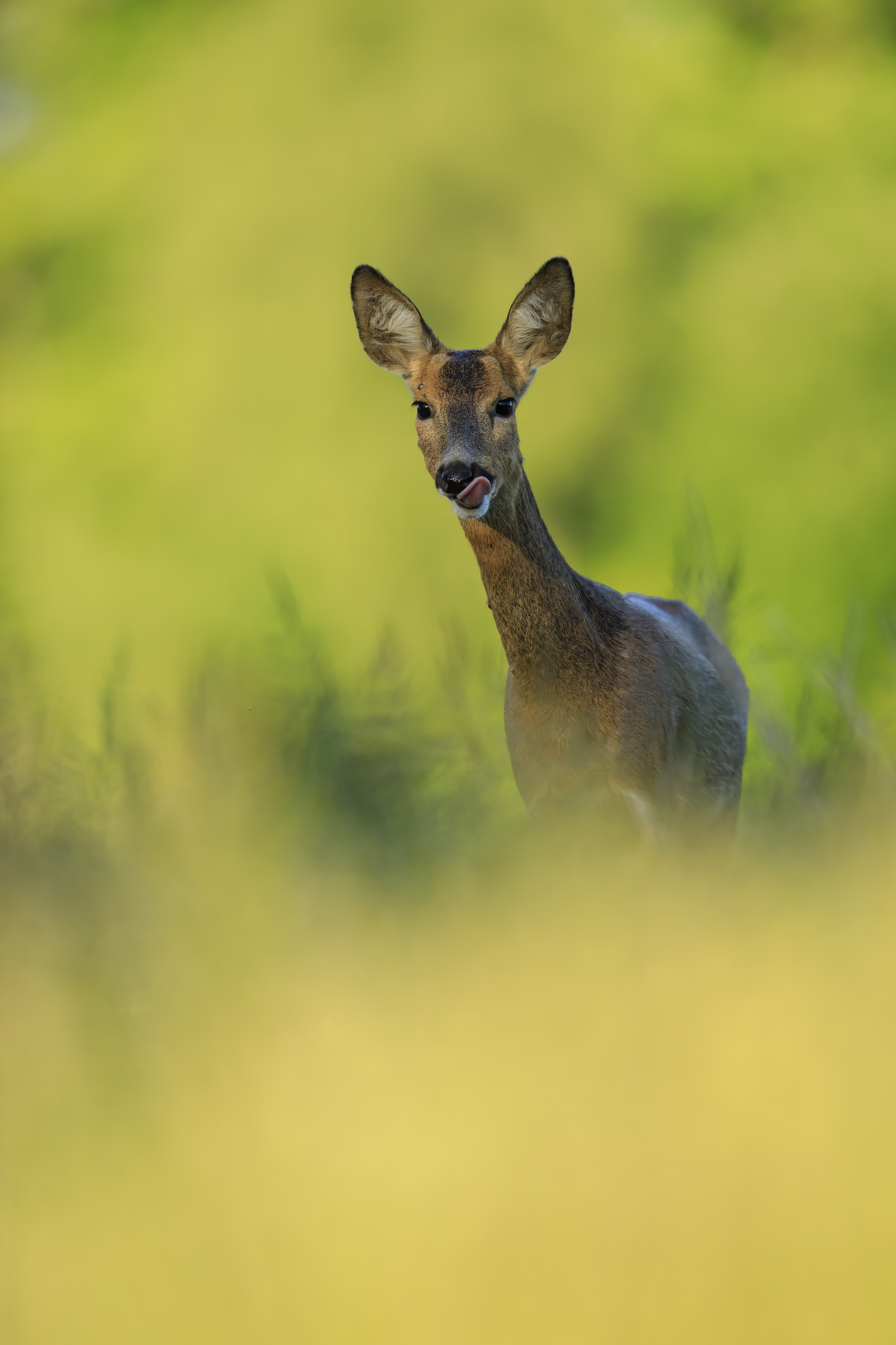
I have been working within the grounds of a family-owned estate, in the heart of the South Downs National Park in the UK, for the past five years specializing in photographing the roe deer that call it home.
I have watched these solitary deer for thousands of hours, learning to understand their behavior and mastering my approach in photographing them. The peak season for photographing roe deer is between the months of May and September, in the run-up to their annual rut and for a short while after.
• Read more: Best camera for wildlife photography
It is during this time that I help people to learn the art of photographing this elusive species – the people that spend far too much time hiding in ditches, creeping through fields of wheat and barley, and always trying to keep downwind. The most important lesson of all those I have learned, is to let the deer come to me after I make an initial approach.
5 Top tips for photographing roe deer
01 Wear the right clothes
It’s really important to wear clothing that helps you blend into your surroundings. It doesn’t need to be camouflaged, but be aware deer can see in the UV spectrum and certain clothing will shine under UV light.
02 Get low
One of the key things, which I can’t stress highly enough, is to get low down. Sitting and laying down enables you to get level with the deer, in turn making your images more impactful.
03 Wind can be your friend
All deer species have an incredible sense of smell, so if you are upwind of them they will quickly be alerted to your presence. Always check the wind direction and ensure you are downwind when trying to photograph deer.
The best camera deals, reviews, product advice, and unmissable photography news, direct to your inbox!
04 Get permission from the landowner
It may sound simple, but make sure you have permission to be on the land you are photographing. By having access to an entire estate, you can explore areas that may not be accessible to the public and increase your success rate.
05 Be patient
Finally, and most importantly, you must be patient. It can take weeks before you get the shot you are after and you normally only learn by making mistakes. It has taken me many years to get particular shots.
Step-by-step guide to photographing roe deer
01 Use a shallow depth of field
In order to capture striking portraits, the key tool I have at my disposal is the aperture. I generally use the widest apertures I can and, by getting low down, I can isolate the roe deer from the background and foreground. I typically photograph using apertures between f/2.8 and f/5.6 for intimate portraits.
02 Try shooting with backlighting
It’s all too easy to focus on that beautiful soft light falling softly on the face of your subject, but sometimes it’s important to try something different. Why not think about backlighting? Make sure you keep an eye on your shadows and highlights (using the histogram) and make the most of silhouettes.
03 Test out shooting in portrait orientation
Naturally the majority of my photos are taken in landscape, but sometimes the situation calls for turning the camera round and shooting in portrait format instead. It is too easy to play it safe, but turning the camera to portrait can enable an image to stand out from the crowd – maybe even as a magazine cover!
04 Choosing the Right Lens
This is probably one of the key parts when photographing any wild species: choosing the right lens for the job. I work with prime lenses, my Canon EF 300mm f/2.8 or Canon EF 500mm f/4, that help me to keep my distance, provide excellent clarity and exceptional bokeh when I am close to my subjects.
• Best lenses for wildlife photography
05 Capture the Environment
Sometimes it isn’t all about close-up, intimate portraits; the landscapes in which I see the deer can be just as magical as the deer itself, and capturing them in their natural habitat can be equally rewarding. By combining all the other points, I often keep my distance and photograph from afar.
Read more:
Best telephoto lenses
Best trail cameras
Best portable hides and camouflage gear
Best binoculars
Best spotting scopes
Digital Camera World is one of the leading authorities on camera and photography news, reviews, techniques, tutorials, comparisons, deals and industry analysis. The site doesn't just specialize in cameras, but all aspects of photography, videography and imaging – including camera phones, gimbals, lenses, lighting, editing software, filters, tripods, laptops, printers, photo books, desks, binoculars and more.
Whether you're using, looking to buy or trying to get the most out of a compact camera, action camera, camera drone, cinema camera, beginner camera or professional camera, Digital Camera World has a roster of experts with combined experience of over 100 years when it comes to cameras, photography and imaging.







